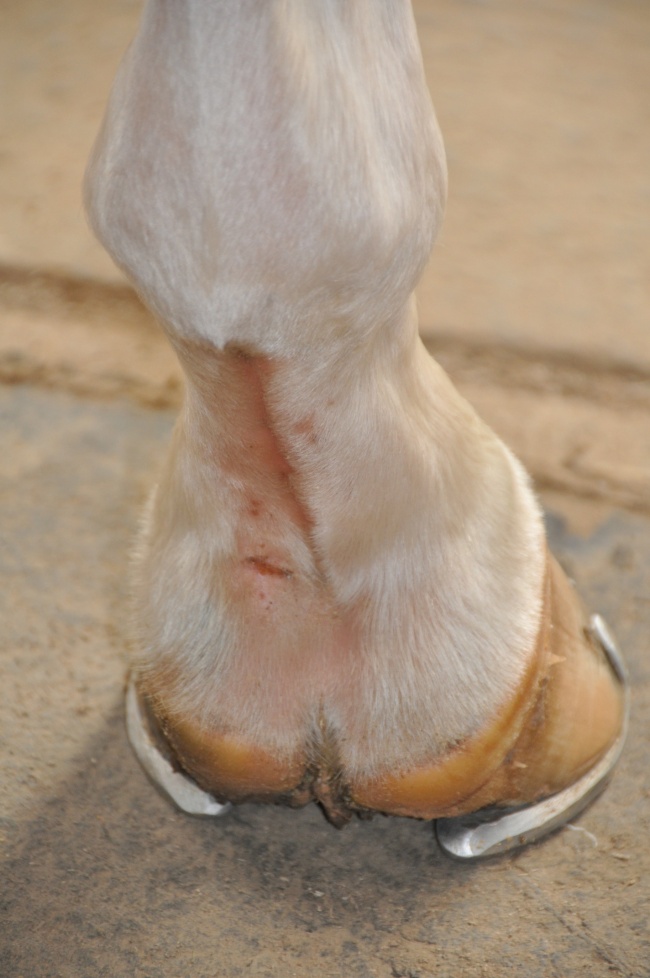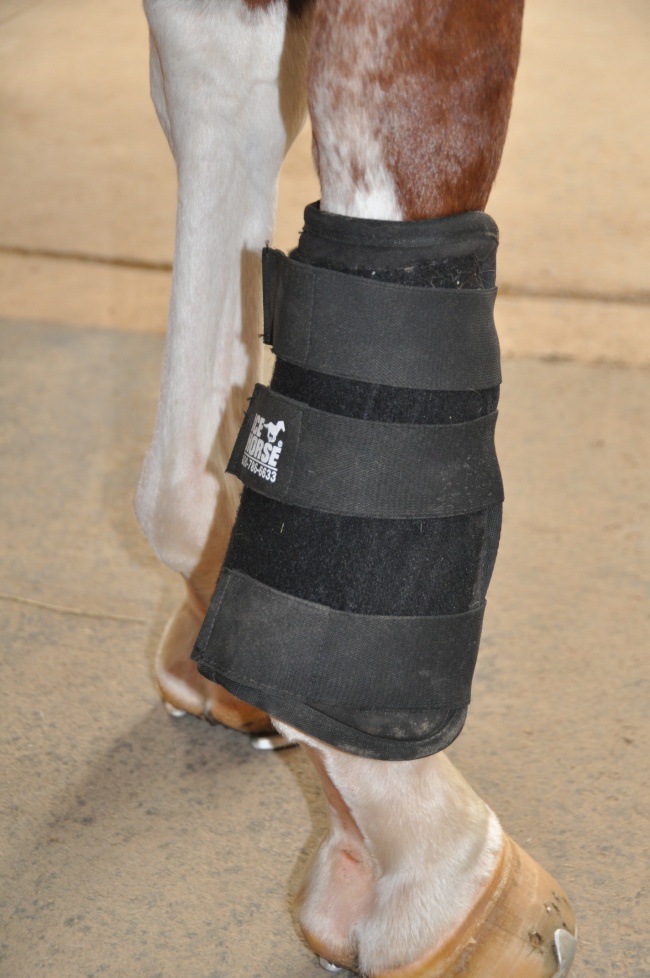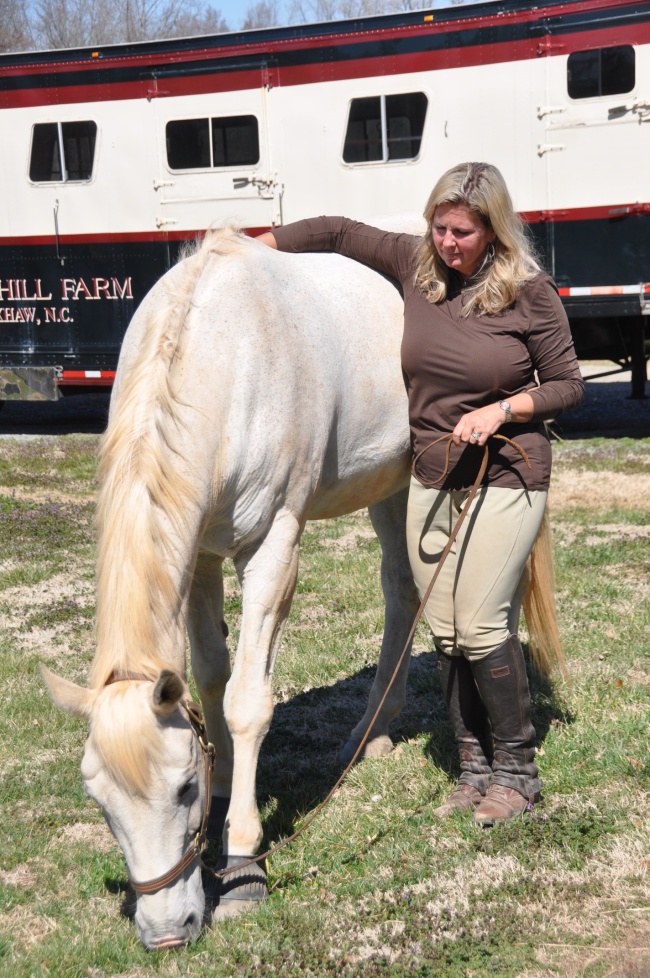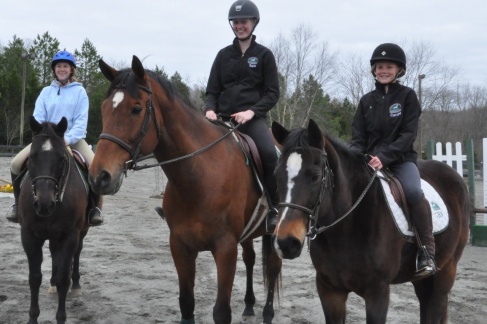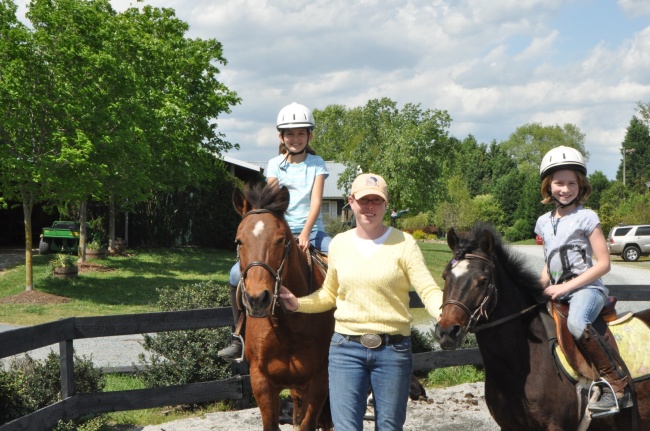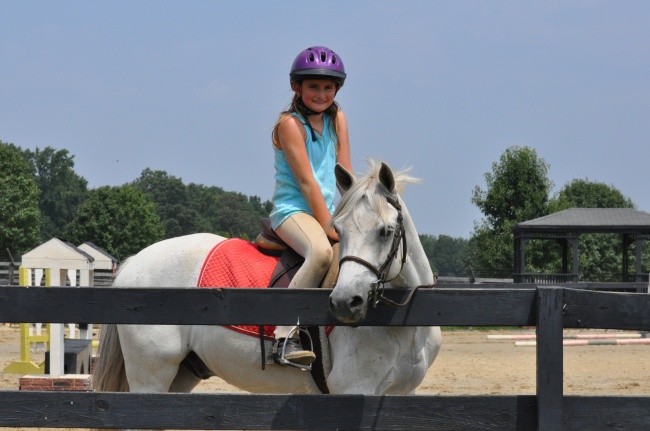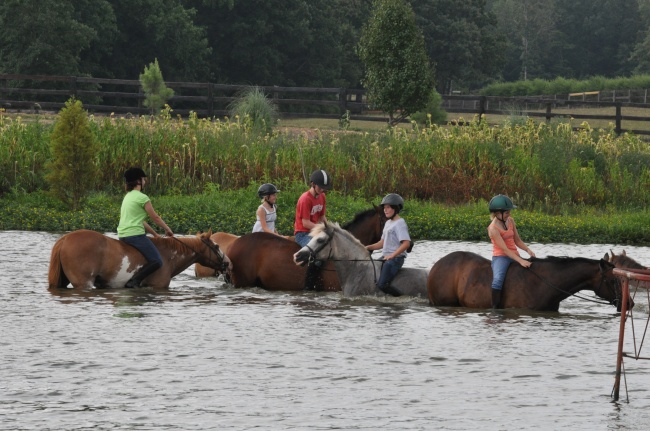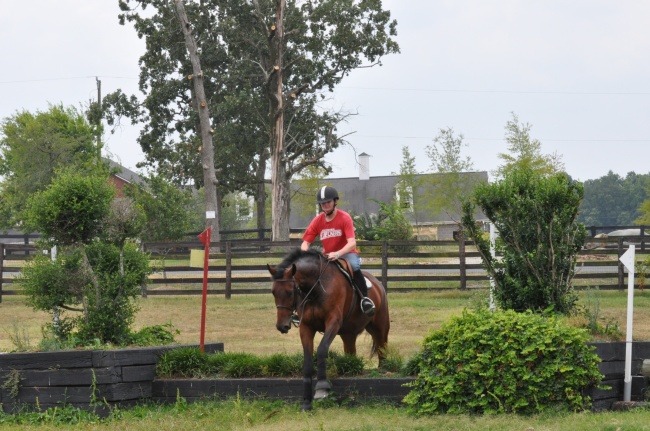Equestrian Supplies for every day usage-
What to pack in your Smaller/Every Day Trunk (that you also take to Horse Shows)
Everyone who is taking the next step; committing to riding regularly, half or full leasing, or being a very lucky rider indeed and able to own a horse needs a trunk. A trunk keeps all your riding equipment at the right place- the barn.


Paul Helm’s Trunks are beautifully made and include a lift out tray and tote.
Before I go into details about what to put into your trunk however, perhaps I should make sure you have a trunk to start with!
Paul Helms makes some of the nicest, well made trunks for the money. He customizes each one with initials and handcrafted details that sets his apart from many others. However, because they are so labour intensive and artistic, they need to be ordered 2-3 months in advance, depending on his busy schedule.
Paul Helms 704 609 6513
Small Trunk $ 350.
Here are my personal favorites places to shop. It is great to support the local tack shops- The Carolina Country Store in Indian Land, SC and Waxhaw Tack Exchange on Church St, Waxhaw, have a lot of this stuff… the Tack Room in Camden will have all of it, with the exception of items available from CVS and/or Target. Here are their web sites:
Waxhaw Tack Exchange
http://ridingapparelandtack.com/
The Carolina Country Store
http://www.thecarolinacountrystore.com/
The Camden Tack Room
http://www.tackroomonline.com/

Basic Riding Equipment

Sticky Spray… great stuff!
Riding Supplies for the Rider:
1 Paddock Boots
2 Chaps
4 Gloves
5 Helmet
6 Hair Nets
7 Spurs/ Stick
8 Sporty Haft-Spray- otherwise known as Sticky Spray
I am not going into great detail about my recommendations for Riding Supplies- Just note that you get what you pay for. If you aren’t riding regularly, inexpensive that don’t fit or wear super well might be okay …especially if you are outgrowing before you are outwearing your equipment. Everyone has their own priorities. I personally ride in Ariat Monoco paddock boots- they are super comfortable, fit well, look good, and have lasted me a long time. I ride in GrandPrix half Chaps, a One K helmet, and have a few sets of basic spurs and sticks of different lengths for different horses. My half chaps are full grain leather, rather than suede which makes them easy to clean. Sticky spray is one of the best inventions ever. Spray it on the calves of your half chaps, tall boots, or if you are still in jodhpurs; the bottom skirt of your saddle where your calf would be. It truly does give you a more secure leg. Hair nets matching your hair color should be used once you put your hair up into your helmet. Admittedly I HATE anything on my ears and almost NEVER use a hair net. I consider myself an abomination to the George Morris fan club (of which I consider myself a key supporter) and yet they are just that uncomfortable for me personally…
Riding Supplies for the Horse:
1 Boots- Black Eskadron- front and rear
2 Polo Wraps- Black, Hunter Green, Navy, or Burgundy- conservative color
3 Anti-Slip pad for clipped horse
I think for the money, Eskadron boots are a good buy. They last longer and fit better than similar looking Roma boots but aren’t as expensive as some of the other top end boots. They are easy to clean after use- otherwise sand and gravel caught in their fibers will start creating rubs. Boots are essential for jumping lessons in wet footing. Protection that doesn’t soak up water is needed on those sloppy days.
Polos are a good source of inexpensive protection for light jumping – as long as the footing isn’t wet. Polo wrapping is a bit of an art- ask your instructor if you have any doubts on the tightness or evenness of your wrap job.
An Anti-Slip pad isn’t necessary all the time. Typically right after you have your horse clipped, even the best fitting saddle will start sliding back a bit over the short, slick hairs on your horse’s back, making an anti-slip pad crucial. The anti-slip pad made by Professional Choice is shaped like a quarter pad- it is durable and breathes. The Nunn Finer version is shaped like a big rectangle. Don’t cut it to size! Either use it under your square schooling/jumper pad as is, or fold it in half to fit neatly under your fitted hunter show pad. Either brand will only work if they are clean. Dirt clogs the anti-slip abilities. I throw mine in the wash when I wash my schooling pad (but line dry) Expect them to last for about a year. They annoyingly lose their grippy-ness after then.

Everyday grooming supplies- note I have included Sea Shore Acres Sole Paint
Grooming Tools:
1 Metal/rubber curry(My horse & I like metal curry that provides a good scratch)
2 Rubber grooming mitt
3 Hard Brush
4 Soft Brush
5 Hoof Pick
6 Towels (face, flank, sensitive areas)
Currying is ultimately the most important step to grooming. It is when you first really start looking closely over your horse and start removing the first layer of dirt, dead hair, loose skin, etc. Your horse should enjoy this step as a good curry is also a bit of a massage as well. Currying their withers and top of their neck will be a favorite spot for most. I personally like the metal curry- shaped just like the rubber curry- I am not talking about a smaller version of a shedding blade which is for cleaning brushes or shedding in only one direction only. The metal curry I like seems to rub my horse as if I had long finger nails (sadly I don’t) stroking, scratching, and massaging, and loosening up all sorts of grime. The rubber curry also works well- plus they come in smaller sizes for smaller hands, but be sure to replace them once the pointed ridges wear out.
The rubber grooming mitt is useful to curry a more sensitive skinned horse, as well as to curry the more sensitive areas that should be avoided by your main rubber or metal curry- such as their legs and head. With time, even the most head shy horse will enjoy their forehead massaged and curried with a rubber grooming mitt. Luckily mitts aren’t too expensive since they do wear out probably quicker than any other grooming tool you have. Look for the hardy pliable rubber ones, as opposed to the cheaper hard plastic ones made in China…
Everyone needs to shop for their own brushes- what I might love and use religiously might not fit in your hand, or vice-versa. Straps going over the top are useful for some, yet constricting to another. Regardless- brushes are used to clean dirty horses, so presumably they will get dirty. I like plastic bristles that are easily cleaned in a bucket of soapy water, rinsed, and flicked dry every so often. I don’t want them super stiff, yet still hardy enough to follow behind a good curry, knocking off the loosened dirt and grit. I use a soft brush occasionally for a final polish when I have time.
A hoof pick – preferably one also with a hoof brush is crucial to the list of grooming supplies. It is super important to check your horse’s feet before you ride, check for missing, sprung or loose shoes. A hoof pick is required for removing any sharp or hard objects, as well as getting out all the hard dirt that gets packed in, bruising their soles. The brush comes in handy to brush their soles when you are then applying Sole Paint, or Copper Sulfate spray.

Here are many of the grooming supplies that every horseman should have in their trunk
Grooming Supplies:
1 Cowboy Magic Tail De-tangler
2 Thrush Buster
3 Effol Hoof Conditioner (They come with or with out the handy brush on their side… get the brush!)
4 Show Oil- Birdsall (note that you will also need a empty hoof oil/brush can to put this in)
5 Copper Sulfate Spray ( Home made remedy- see earlier blog for how to make)
6 Hair Moisturizer Leave On conditioner to use with a towel for surface wipe (you’ll need an empty spray bottle for the concentrate version)
7 Seashore Acres Sole Paint
8 Fly Spray
9 Mustad – Tuff Stuff
10 Calm Coat/Mineral Oil
I am a fanatic about tails. Nothing compliments a horse better than a naturally huge, beautiful flowing tail. Getting, or loosing them is not an accident. Keeping the tail clean and conditioned is key. After currying my horse I examine their tails. If they are in the slightest point dry, I hand pick debris out, then I slather conditioner on them (even though they are dry) and work it into both ends (the end which grows it, and the end which swishes around and frequently gets caught and broken off) I don’t rinse. After I ride, I then wash the tail thoroughly with shampoo and apply the de-tangler. It is ONLY then that I brush their tails out. Obviously I would only use this conditioning method when I am at home riding and training. I don’t want to show off a gooky tail loaded with conditioner while riding at a show, clinic, etc.
Thrush Buster is a strong, potent solution to bad thrush. There are other medications that do the same thing, however if you are religious about also applying my Copper Sulfate spray solution, you won’t have much of a thrush problem and Thrush Buster is a small bottle- using up only a fraction of the space the other bottles take up. Copper Sulfate Spray should be applied year round, every time you pick their feet. Spray it both on the inside and outside of all the hooves. This cheap homemade solution, made by heating white vinegar and copper- sulfate controls thrush summer and winter, as well as most of the bacteria that seems to dwell in the dew of taller grass which breaks down the hoof wall. Can’t say enough about how good this stuff is…
The hoof is a complex unit. Treat it like a living piece of wood. It needs to be sealed (Tuff Stuff) from the elements before it gets super wet like a varnish- it needs to be conditioned (Effol Hoof Conditioner) from the elements when it gets super dry. Avoid using Fiebings hoof dressing, made with harsh petroleum products which when repeatedly applied for the show ring breaks down the hoof wall and makes the foot mushy. I use Clear Birdsall Show Oil which has natural stuff which might not help the foot, but won’t hurt either when you want a finished polished look. To toughen the bottom of your horse’s soles, as well as to reduce the effect of bruising, I use SeaShore Acres Sole paint which contains DMSO and Phenol, I like it the best, despite it’s hefty cost.
Hair Moisturizer sprayed on a towel helps complete the look -a final polish when I am heading to the show ring, or to collect some of the fine dust that a brush won’t pick up when it isn’t appropriate to bathe. Also useful to spray on the tail before brushing (always brush sparingly!) This stuff comes in a concentrate (cheaper) or ready to use. Don’t forget to get an empty spray bottle if you go with the concentrate.
Fly Spray only works when it is on the horse. Sometimes. I have a hard time buying expensive fly spray in the summer and then washing it off after I ride them, reapplying, and having them sweat it off. I personally don’t use it when I ride, I try to stay active enough to out ride the flies… except when I am trail riding amongst deer flies which most sprays work on marginally at best. One of those fly whisks are pretty effective for your walk in the woods, and you will feel your horse’s appreciation – it is like you are both on the same team- against those pesky bugs… Because of this I don’t really have a favorite spray-
Fungus on horses can occur a multitude of ways- but in all ways it is a bacterial skin infection. Could be due to a suppressed immune system, could be because their skin was irritated by rain, caustic irritants in the footing, there are all sorts of ways your horse can contract fungus. There are many medications on the market. I have found that unless I am dealing with a serious amount of fungus on one particular horse (in which case I usually put them on systemic Sulfa tablets- prescribed by the vet) letting it dry up on its own is the best solution. I then apply either mineral oil or Calm Coat (which I think has mineral oil in it, along with other nice stuff) before I ride. After the ride, I use a gentle shampoo- Tea tree, Ivory, or Corona (but not Quic Silver) and clean off the mineral oil and hopefully the majority of the dry, dead fungus. It is important to WASH – NOT to scrub it off. The skin shouldn’t be picked at, or irritated by scrubbing. This preserves the skin’s own natural defense against the current and future fungus. If it needs to be done more than once to get it all off- then do it again the next time you ride!

Bathing Supplies- the small bucket is supper handy to store all the bottles on the bottom of your trunk once you’re done with the bath,
Bathing Supplies:
1 Corona or Tea Tree Body Soap
2 Quic Silver – for whitening
3 Conditioner
4 Small Bucket
5 Body Sponge
6 Poly Fiber Brush- short bristles- for scrubbing socks, etc.
7 Sweat Scrape
8 Nylon Halter- Walsh or Hamilton
9 Aloe Vera (use under wraps and basic leg rub down)
10 Vetrolin or Absorbine Liniment as a brace, coolant and rub down
When bathing a horse, presumably they are going to get wet. For this reason I cringe when I see our riders soaking their expensive leather halters during the bathing process. For everyday use I use a nylon halter, with or without a leather crown. I prefer either Walsh or Hamilton Nylon halters, well made, of a conservative color. I also use for everyday a Walsh leather lead shank with a brass chain. When leading- the chain belongs OVER the nose. This is NOT abusive. This is control, which enables everyone to be safe- horse and rider.
There are a bunch of equine shampoos on the market. I like to start the bathing process by wetting my horse, legs first, then applying Quic Silver on a plastic bristled brush ( I frequently use the same hard brush I had used to groom- especially if it needs to be cleaned) and then rubbing it on all the white markings- legs, face as permitted…etc. Note that I said ‘rubbing” be careful about scrubbing- it all depends on if your horse’s legs are freshly clipped (rub) or fuzzy (scrub), or if you have very coarse bristled brush (back to rubbing… with only a bit of scrubbing) on how much, or little rubbing and/or scrubbing you do. If you have a grey horse, apply Quick SIlver directly, mixing with water is a waste of time and soap. Don’t rinse yet. Letting the Quic Silver do its magic, I then put Corona, or Tea Tree Shampoo- a shampoo I just started to use that I like, into a small bucket, fill with warm water and scrub away with a sponge, top to bottom, front to back. Don’t forget the belly where lots of dirt gets flung up, as well as between their back legs. Condition the tail with any good conditioner- I use Mane & Tail Conditioner, but also use Pantene – for people, which I get at a good price at Costco. You can’t have enough conditioner for the tail- to use before the ride as discussed previously, or after the bath. As important as it is to scrub and loosen the grime, it is equally important to then rinse it off. I scrape and rinse a few times, to be certain.
At most shows, when your horse has jumped over 2’ and has to remain in his stall we wrap their legs, which helps prevent stocking up , which wouldn’t be the case is they could get turned out. Aloe Vera is a great gentle, cool, soothing product to rub their legs down with prior to wrapping, especially in the summer. Find this with Sun/Skin products at CVS, or Target.
I use Vetrolin, diluted with water for a refreshing leave on cooling treat after bathing them in the summer- especially after a particularly strenuous work out. Used too often however,the alcohol in Vetrolin will dry out their skin. I also use either Vetrolin or Absorbine as a rub down after work outs- on sore muscles and legs.

Tack Cleaning Supplies, as well as an assortment of grooming supplies, etc.
Tack Cleaning Supplies:
1 Tack Cleanser Spray ( I like to use regular Lysol diluted with water)
2 Conditioner – Belvoir or Effax Leather Balsam
3 Tack Sponge- ( I like the larger natural sponge- lasts forever )
4 Urad for polishing riding boots- black or brown.
Leather tack when properly taken care of will last a very long time. Clean it after every ride by wiping it with either plain water, or what I use- Lysol solution diluted with water. I spray the tack with this dilution, then use a small hand towel to wipe off the grime. My attempt is to wipe it OFF, not rub it IN. I condition my tack with a sponge smeared with Belvoir or Effax Leather Conditioner every second, or third time that I actually clean it – it needs to be cleaned far more than conditioned. While cleaning tack, I usually wipe down my half chaps and boots, conditioning them with the same regularity as the rest of my tack, only in the case of my black paddock boots- I use black Urad which gives them a protective shine.
Miscellaneous:
1 Sharpie (to label all your tools and supplies!)
2 First Aid- Band Aids w/ Neosporin for you
3 Sunscreen for you
4 Corona Ointment for superficial scrapes for your horse
5 Seam Rippers – to remove braids at A Shows (look in the sewing department of Target/Walmart etc)
6 Treats- Carrots are best- otherwise check for sugar content for PSSM Horses…
7 Scissors
Not much to have to explain in this last bit. As daunting as this entire list seems- there is always more… Check out the trunks of some of us who have been with the horses longer… it is always amazing what one will find!



